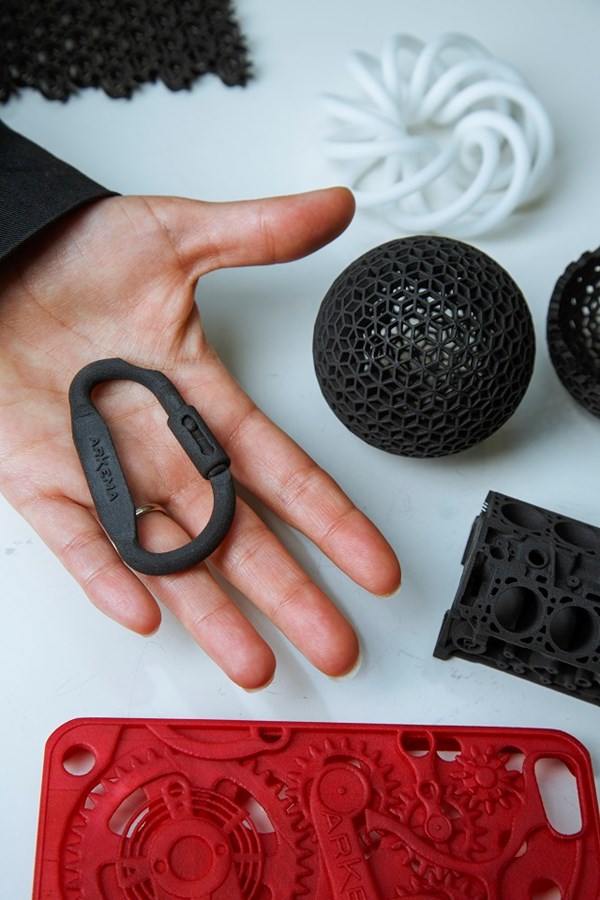One of the First Biobased Nylons Turns 70
Despite its advancing age, an “exciting future” is forecast for Arkema’s Rilsan Nylon 11.

We have been reporting on new bioplastics for the last several years and more recently, I have blogged about new developments unveiled at the SPC Bioplastics Converge conference. We have also reported on the ‘greening’ of engineering thermoplastics—a cover story that appeared in our May 2015 issue.
In that article, I noted that most of the commercial activity has been focused on nylons and polyesters, though some are directed towards higher-end TPEs and TPUs. The nylons appear to have the longest run, though, and I thought it worthwhile to highlight the 70th anniversary of the invention of Arkema’s flagship Rilsan nylon 11 series of high-performance polymers, whose feedstock source is derived 100% from the oil castor bean (pictured at top)—making it among the earliest members of the biobased nylon family of polymers.
And, despite its advancing age, the company sees nothing more than “an exciting future” for these polymers. “Today Rilsan PA11 is known across the globe for being one of the world’s highest performing specialty polymers—the brand has become synonymous with differentiated performance as well as being 100 percent biobased,” says Kevin Hanrahan, chief marketing officer for Arkema’s Technical Polymers. “But the brand came from humble and challenging origins.”
Arkema shared the history of Rilsan nylon 11 in 7 key dates:
● June 1947—First patent, commercialized by a small French firm called Organico.
● 1949—Nylon 11 makes its market debut under the brand name Rilsan; Serquigny plant is built.
● 1950’s—The automaker Citroen is one of the first to grasp the potential of the new plastic, using it to make the fuel lines of the legendary DS.
● 1970—Production begins in the U.S. (Birdsboro, Penn.)
● 1980’s and 1990’s—Rilsan nylon11 becomes the reference for many automotive oil & gas applications.
● 2000’s—3D printing, advanced composites, lightweight sports equipment, and metal replacement are common development themes
● 2013—Production begins in China (Zhangjiagang).
The first commercial batch was made in 1947 in a repurposed spinning mill called ‘La Dame Blanche’ in Serquigny, France. (Gosh, that name is reminiscent of Brando yelling ‘STELLA’ in Tennesse Williams’ Streetcar Named Desire). According to Arkema, these historic first steps were taken during very difficult times.
The desperate conditions of post-World War II forced the original inventors to work under extremely adverse conditions. Each harrowing step of the Rilsan pioneers is richly documented in Arkema’s digital museum.
Arkema also recorded the evolution of the material’s original applications via a series of advertisements and promotions. From humble beginnings in textiles, fibers, brushes and pipes, the polymer quickly gained recognition in specialized applications driven by its early unique set of extreme performance properties.
Rilsan nylon 11’s birthday celebration was officially kicked off at Arkema’s Serquigny production facility and research center on June 10th. Erwoan Pezron, global president for Arkema’s Technical Polymers, reflected not only on the rich legacy of the Rilsan polymer family, but on its exciting future.
“The rapidly evolving world in which we live presents more and more opportunities for continued growth…Rilsan polymers are now produced in all three major regions—Europe, North America, and Asia. And we are ready to meet many of tomorrow’s challenges today—such as lightweight metal replacement for the automotive industry, additive manufacturing (3D printing), and sports equipment that helps athletes break records. The first 70 years have prepared us well.”

Related Content
Cling Wrap Made from Potato Waste
Australia’s Great Wrap to expand into U.S. with home compostable cling wrap and its refillable dispenser made from recycled PET bottles.
Read MoreResins & Additives for Sustainability in Vehicles, Electronics, Packaging & Medical
Material suppliers have been stepping up with resins and additives for the ‘circular economy,’ ranging from mechanically or chemically recycled to biobased content.
Read More50 Years of Headlines … Almost
I was lucky to get an early look at many of the past half-century’s exciting developments in plastics. Here’s a selection.
Read MoreWhy Are They Blending Biopolymers?
A sit-down with bioplastic producer Danimer Scientific showed me there are more possible answers to that question than I had previously thought.
Read MoreRead Next
Processor Turns to AI to Help Keep Machines Humming
At captive processor McConkey, a new generation of artificial intelligence models, highlighted by ChatGPT, is helping it wade through the shortage of skilled labor and keep its production lines churning out good parts.
Read MoreWhy (and What) You Need to Dry
Other than polyolefins, almost every other polymer exhibits some level of polarity and therefore can absorb a certain amount of moisture from the atmosphere. Here’s a look at some of these materials, and what needs to be done to dry them.
Read More
























